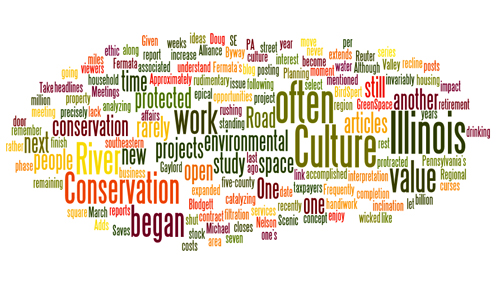The Outdoor Foundation is a consistent and reliable source of information about outdoor recreation. Among their recent publications is one titled Outdoor Nation Special Report: Technology and Social Media. We have been focusing on how to use emerging media to better connect people to places, and this report offers a fascinating glimpse into the digital revolution facing us.
Treed
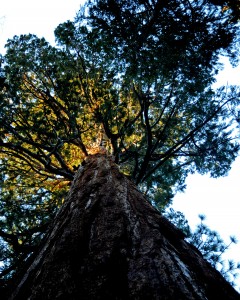
On Monday several of the groups sped from Porterville to the Forest to see the nearest grove of sequoias. These trees are among the largest and oldest living organisms on earth, with the oldest reaching an age of 3000 years. Words cannot describe how humbled one feels when first standing at the base of one of these giants.
The interpretive plan and Powerpoint from the final day’s presentation by Marianne, Joe, and Ted have been posted to the Fermata website.
Thanks to NAI, follow participants, and particularly Marianne and Joe for a wonderfully stimulating and productive week.
America the Beautiful
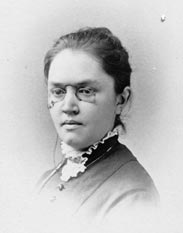
My youthful reading naturally gravitated to history. In fact, I cannot remember when I didn’t have three of four history books in some stage of completion. Now, armed with a Kindle and an iPad, my consumption has eclipsed what is possible ingesting only words on paper. I am awash in digital history.
My preferences are for world periods that I know little about, and for American conservation history. At the moment I am reading Reston’s Defenders of the Faith. Are you curious about the origins of conflicts between the Christian and Islamic world, between Charles V and Suleyman the Magnificent? Reston is an encyclopedic source. As for American conservation history, I rarely leave the late 19th and early 20th centuries. Roosevelt, Dock, Pinchot, Bird, Rothrock, McFarland, and Lacey inevitably suck me into their vortex.
Recently I have been exploring place as a way that we Americans consider ourselves, in fact, define ourselves. A song that captures that notion for me is America the Beautiful. Consider the first stanza. What could be more evocative of place?
O beautiful for spacious skies,
For amber waves of grain,
For purple mountain majesties
Above the fruited plain!America! America!
God shed His grace on thee,
And crown thy good with brotherhood
From sea to shining sea!
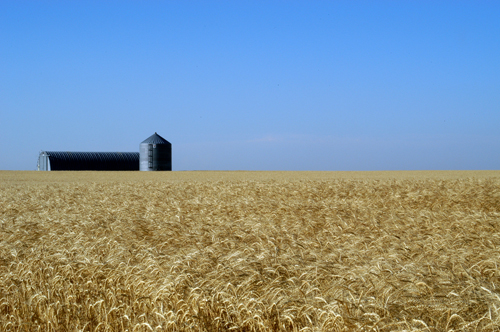
I decided to look closer at the origins of this seminal piece of American patriotic composition. Not surprisingly, I found myself back in this frenetic high-period of American progressive politics. At the outset I knew very little about Katherine Lee Bates, the lyricist, professor, social activist, and poet whose words are memorialized in the song. Bates spent her life teaching at Wellesley College, and in addition to her teaching she wrote children’s books, travel books, and poems. Only one of her poems is famous, but, in her case, one is enough. Here are notes that she wrote about her first thoughts about this poem:
One day some of the other teachers and I decided to go on a trip to 14,000-foot Pikes Peak. We hired a prairie wagon. Near the top we had to leave the wagon and go the rest of the way on mules. I was very tired. But when I saw the view, I felt great joy. All the wonder of America seemed displayed there, with the sea-like expanse.
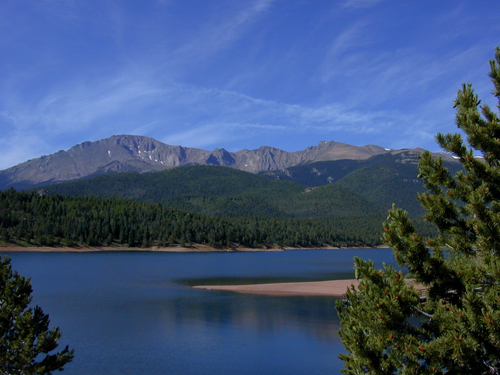
Bates would continue to craft the poem, first published in 1895, for another eighteen years. In 1910 Bates lyrics were combined with the music of Samuel A. Ward as America the Beautiful. The music began life as Ward’s hymn Materna. Ward would never meet Bates, and he died in 1903. Ward never heard America the Beautiful, his music or not. Bates is a different matter.
As I have continued to read about Bates, there are aspects of her life that are surprisingly contemporary. Bates is often described as an ardent feminist (although at that time I suspect suffragette to be more likely.) In addition, although the details of their relationship are sketchy, Katherine Lee Bates spent most of her adult life as the partner of another woman in a “Boston marriage.” While on staff at Wellesley she met Katharine Coman and began a relationship that lasted for 25 years. Most historians have described the relationship as a “romantic friendship,” but there is no doubt that they enjoyed an intensely loving partnership that lasted until Coman died of breast cancer.
Let this soak in for a moment. The author of America the Beautiful, considered by many to be the most stirring anthemic affirmation of our nation, one of the few that most Americans can sing at the drop of a hat, came from the poetry of an educated, progressive, liberated woman who spent her life in a loving relationship with someone of the same sex.
Although I said that most Americans can sing the anthem at the drop of a hat, few make it past the first verse. Sad. Bates wrote her poem at the height of the progressive movement. Here are the second and third verses, as germane and cutting now as then.
O beautiful for pilgrim feet
Whose stern, impassioned stress
A thoroughfare for freedom beat
Across the wilderness!America! America!
God mend thine every flaw,
Confirm thy soul in self-control,
Thy liberty in law!O beautiful for heroes proved
In liberating strife.
Who more than self the country loved
And mercy more than life!America! America!
May God thy gold refine
Till all success be nobleness
And every gain divine!
Katherine Lee Bates found her passion for this country as she traveled west across the Great Plains to the Rocky Mountains. Her love of country is rooted in a love of American places. Roosevelt’s passions for America were similarly kindled by the landscape, by the wildlife, by the place.
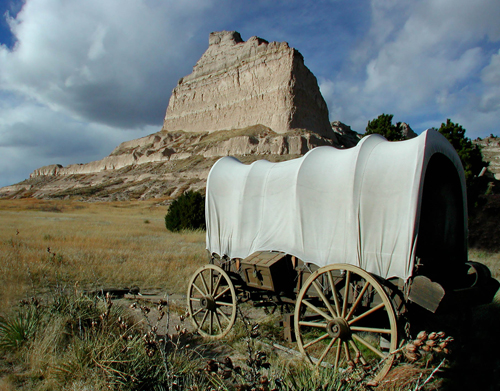
We have fallen heirs to the most glorious heritage a people ever received, and each one must do his part if we wish to show that the nation is worthy of its good fortune…Theodore Roosevelt
Who would have the temerity to question Roosevelt’s love of country? Who would challenge the patriotism of the amazing woman who authored America the Beautiful? Can you imagine telling either to “love it or leave it?” Yet, in these polarized times, a time when fair and balanced are neither, these are precisely the charges they would suffer. Consider how this statement from Roosevelt would be treated by some in the press today:
To waste, to destroy, our natural resources, to skin and exhaust the land instead of using it so as to increase its usefulness, will result in undermining in the days of our children the very prosperity which we ought by right to hand down to them amplified and developed…Theodore Roosevelt
Or, what about this quote from Gifford Pinchot?
The earth and its resources belong of right to its people…Gifford Pinchot
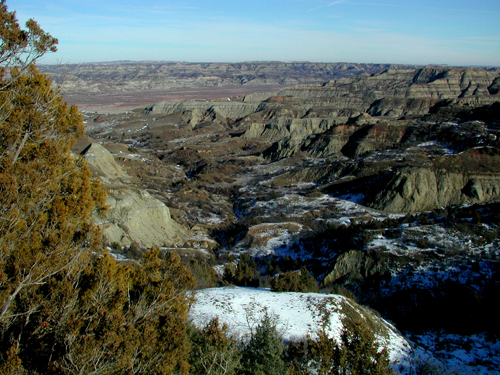
How would the words of these two stalwart Republicans be welcomed today? The judges may have changed, but not the principles of the ones being judged. There is a well-worn trail for us to follow, one blazed by these unequaled men and women of the past. The country may at times feel lost, but never should we. A life in conservation embraces a love of nation, a love of neighbor, a love of the wilds, a love of place. As our poet wrote,
O beautiful for heroes prov’d
In liberating strife,
Who more than self their country loved,
And mercy more than life.
Thank you, Katherine Lee Bates, for your wonderful song and beautiful life.
Here is Ray Charles’ live rendition of this soul-stripping, heart-charging song. Note that he begins with the third verse, not by accident. If this doesn’t drip with irony, with raw passion, you have no pulse.
Ted Lee Eubanks
12 Nov 2010
Fermata End-of-the-Year News
Let us begin with wishing all of you a happy holiday season. We doubt that any of us will forget 2010, as hard as we may try! Here hoping for a productive, peaceful, prosperous 2011.
We have recently posted a new podcast and two PowerPoints to our Podcast and Presentation page. The podcast is a recording of Ted’s October talk to a group gathered in Beckley, West Virginia. The conference, titled Reaching the Summit: Balancing Commerce and Nature in the New River Gorge Region, is one of the Conservation Fund’s Balancing Nature and Commerce workshops where Ted periodically speaks. We have posted Ted’s PowerPoint from that conference as well.
The PA Wilds continues to be in the news. The latest newsletter from the PA Wilds Resource Center is now available here.
Fermata’s Great American Trails has now created its third SmartTrail – the Tidal Delaware River Water Trail. The SmartTrail app is available for the iPhone, Android, and Blackberry platforms. More detailed information is available on the Great American Trails page in this blog.
Fermata Wordle
We are often asked about the nature of our work (what do you do, exactly?). The answer is always cumbersome and incomplete. Now there is a web-based program that help us show what we do – Wordle. Wordle creates word clouds from text or a RSS feed from a website. This evening we ran the Fermata weblog through Wordle, and presto! here is a taste of what we do!
